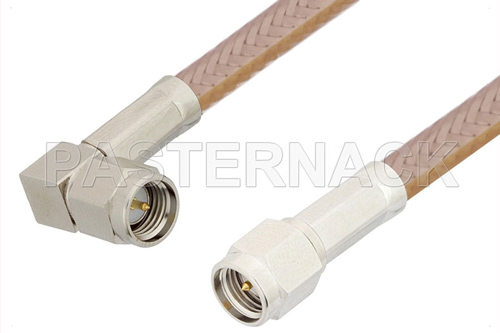 RF high speed interconnection is used in many electronic products where signal transmission quality is a critical factor in applications using high speed digital signals. An RF interconnect is the complete path that connects one device to another; RF-interconnect structures include coaxial cable assemblies, microstrip transmission lines, and waveguides with RF connectors, adapters, and attenuators. Many wireless communication systems require numerous RF interconnect paths such as in the case of sensitive sensor modules, RF modules to antennas, and between networked devices. As RF hardware is increasingly digitized, there are more applications that require high speed digital signals for data transmission between RF hardware. Also, the latest high speed digital technologies also leverage RF coaxial transmission lines and microstrip (stripline) transmission lines for connector interfaces, cabling, and chip fan-out.
RF high speed interconnection is used in many electronic products where signal transmission quality is a critical factor in applications using high speed digital signals. An RF interconnect is the complete path that connects one device to another; RF-interconnect structures include coaxial cable assemblies, microstrip transmission lines, and waveguides with RF connectors, adapters, and attenuators. Many wireless communication systems require numerous RF interconnect paths such as in the case of sensitive sensor modules, RF modules to antennas, and between networked devices. As RF hardware is increasingly digitized, there are more applications that require high speed digital signals for data transmission between RF hardware. Also, the latest high speed digital technologies also leverage RF coaxial transmission lines and microstrip (stripline) transmission lines for connector interfaces, cabling, and chip fan-out.
Achieving maximum performance from RF communication systems and high speed digital data transmission requires close attention to interconnect technology, circuit-to-circuit interconnections, and circuit design. RF interconnectors can perform to hundreds of gigahertz (Gigabits per second) and are used in a variety of high speed digital applications, such as communication devices, high performance computing, and sensors. There are of numerous types of RF interconnect used with high speed digital signals, such as BNC, CX/MMCX, SMT/SSMT, SMA/SSMA, SMB/SSMB, SMC/SSMC, and TNC Connectors, and RF Adapters.
Timing is Everything
Signal timing and the quality of the signal are important concepts in high speed digital designs. A primary concern when designing a digital communication system involves isolating high speed signals, which are more likely to impact or be impacted by other signals, and maintaining signal integrity to ensure a signal reaches its destination. In a communication system, digital signals travel through various interconnections from chip to package, package to RF board trace, and trace to high speed connectors; any electrical discontinuity at the source end, on the transmission path, or at the receiving end, will affect the signal timing and quality.
RF interconnect for high speed digital applications require reasonable isolation and protection from electromagnetic interference. Hence, shielding and connector quality are of great importance. Moreover, many high speed digital applications have high interconnect densities, requiring small pitch distances. Hence, push type connectors and connector assemblies with a multitude of RF connectors, such as pogo-pins and snap-connectors, are common. An important factor to note is that reducing the delay between separate parallel digital signals requires very closely matched transmission line lengths, which is a design challenge considering the complexity of dense digital signal pathways.
Next Blog Preview
In Part 2 of “RF Interconnect Insights for High Speed Digital Signals and Data Communications” we will review concepts, such as intermodulation distortion with high speed digital communications and interconnect challenges with high speed digital applications.
To learn more about Pasternack’s diverse line of coaxial RF cables, visit:




 Pasternack Blog
Pasternack Blog
